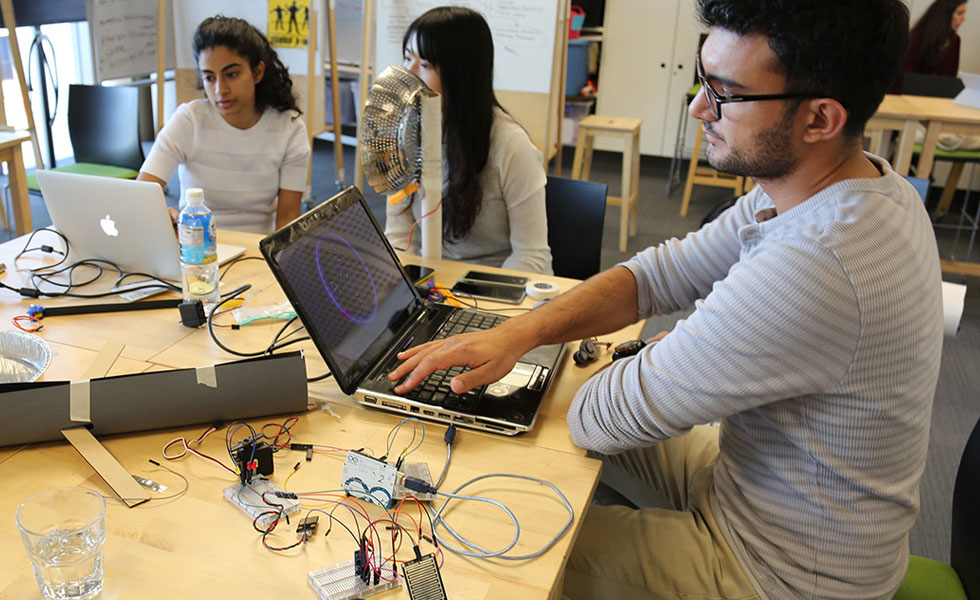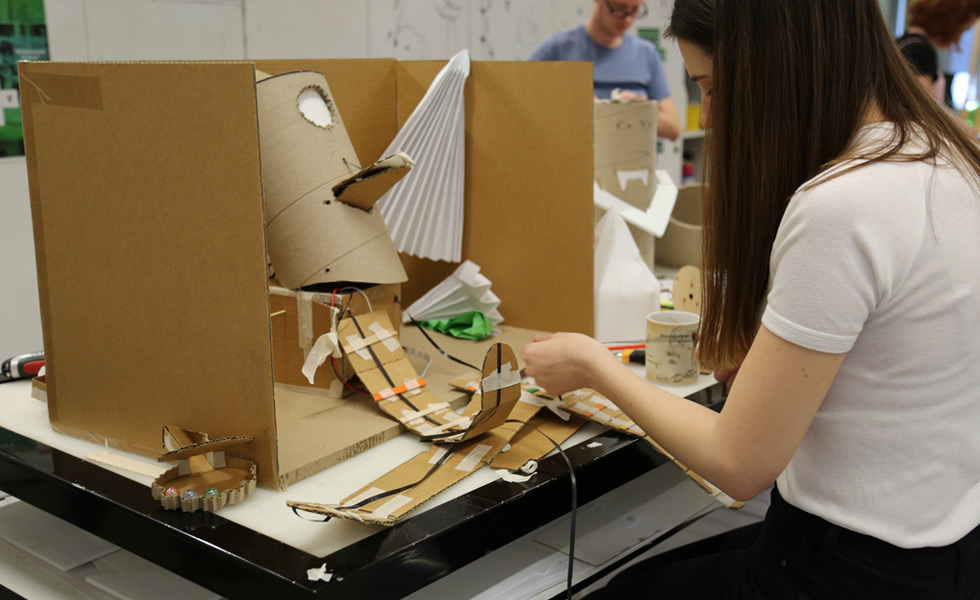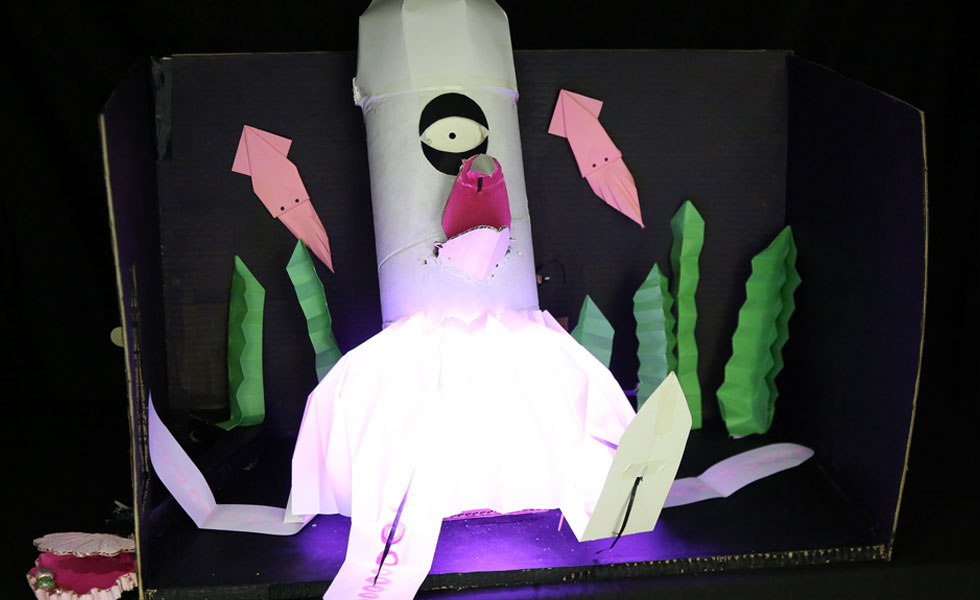Projects
2016-17 Global Programs Kick Off

John, Co-ordinator Global Programs
07 October 2016
The DFM Global programs are counting down to industry project launch on October 20th, when 9 Swinburne students will work with 3 international industry partners on real innovation challenges.
To prepare for internationally synchronised lift-off the students have been undertaking short intense internal innovation challenges including the Paper Robot Challenge and the Flow Induced Vibration Challenge, developing their interdisciplinary collaboration and user centred design skills.
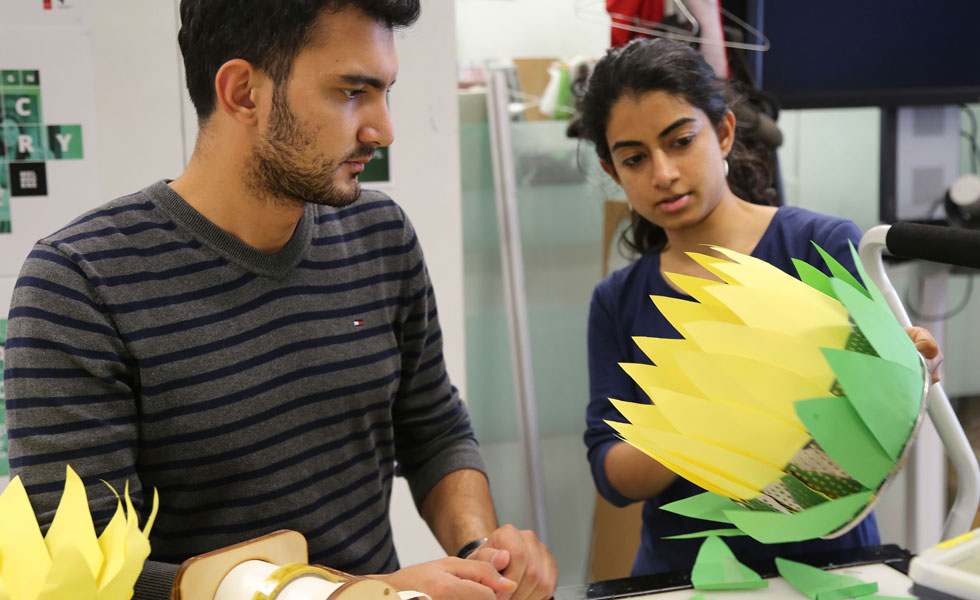
Paper, a colander and simple electronics = an emotive sun flower.
The Paper Robot Challenge combines user experience design with mechatronic prototyping and coding culminating in the students hosting an interactive exhibition where the Swinburne community is invited to ‘have a conversation’ with the students’ robots.
The Flow Induced Vibration (FIV) project challenges the students to find a viable market application for clean energy generation. The vibrations that occur on a solid body when placed in a flow stream of fluids or wind are currently being investigated by Swinburne researchers.
Traditionally FIV has been viewed as having only negative impacts on infrastructure such as architecture, bridges, and off-shore structures causing undesirable stresses on the materials. However, Dr Justin Leontini with his background in computational fluid dynamics and team of engineers are researching methods for harvesting and optimising the renewable energy created by this naturally occurring phenomena.
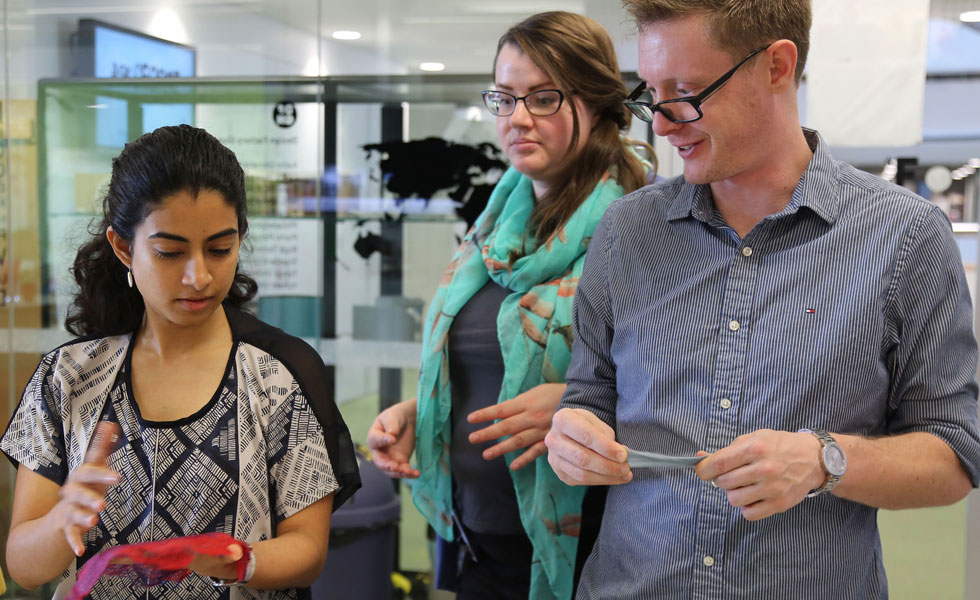
Team and community building during a Fast Loose Unplanned Innovation Design, or FLUID, Challenge
The Global Program students in partnership with Dr Leontini have spent 5 weeks designing new product concepts and conducting end user testing with a view to increasing public awareness for this clean alternative energy resource. The interdisciplinary teams have been documenting their research in video format and using human centred design led approaches have explored applications ranging from recreational fishing to lighting public spaces using localised energy capture. The white paper product reports and supporting video documentation will support continuing research by providing real user insight into how the public may be most likely to adopt and engage with new energy generation methods.
“Traditionally FIV has been viewed as having only negative impacts on infrastructure such as architecture, bridges, and off-shore structures causing undesirable stresses on the materials.”
By the time the industry partnered projects commence the global students will already have a strong portfolio of innovation techniques and will be well prepared to become active agents of change, creating disruptive intervention for social and economic benefit.
The Paper Robots and FIV projects will be on display at the Design Factory Melbourne gala on November 25th – Come and meet the next generation of innovators.

